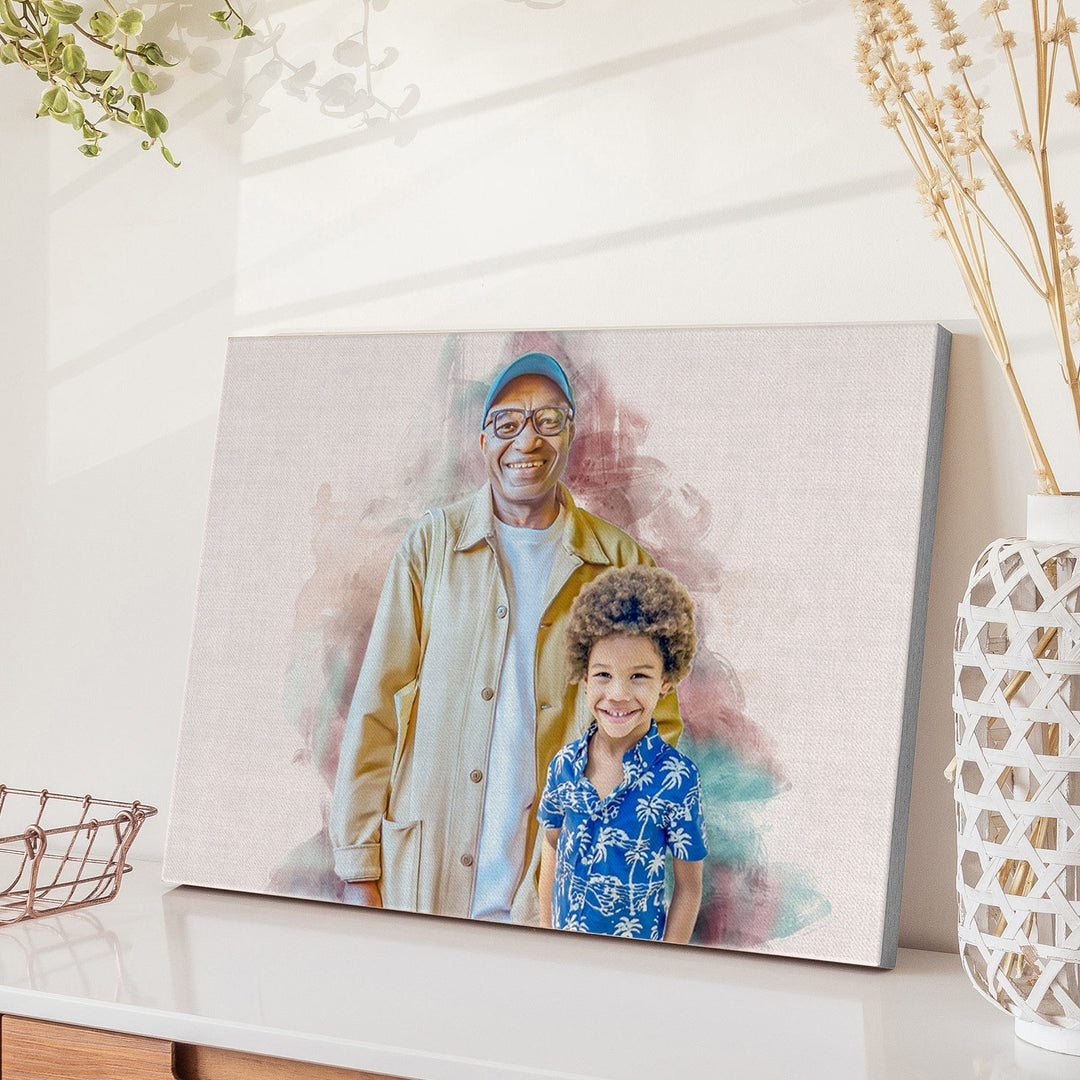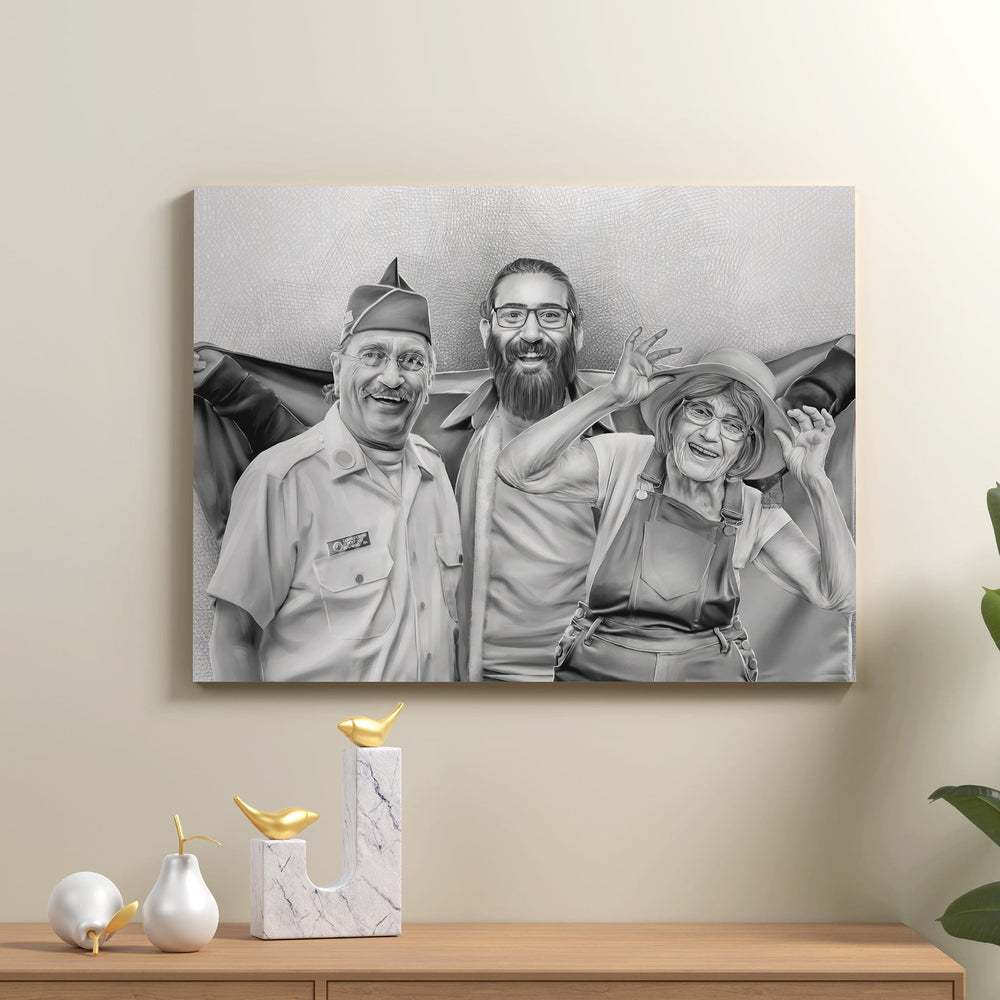A Guide to Digital Art Styles in 2023


Photo by Katya Wolf from Pexels
Digital art is a unique form of artistic expression created using digital tools and editing software. While it shares similarities with other art forms, its techniques, and process set it apart. In 2023, the digital art landscape continues to evolve, offering a wide array of captivating styles that ignite inspiration. From the striking beauty of line art portraits to the intricate details of faceless portraits, digital art pushes the boundaries of creativity and presents new avenues for artistic exploration.
Embracing technology and innovative techniques, digital artists continue to redefine the possibilities of artistic expression, making the world of digital art a captivating and ever-evolving industry to explore. This article serves as your guide to discovering and understanding the rich tapestry of digital art styles that shape the artistic landscape in 2023.
Types of Digital Art Styles
There are plenty of popular choices of digital art styles that have been developed over time. Through this digital medium, artists were able to pursue their artistic process in a more flexible manner, allowing them to turn real life scenarios into stunning masterpieces.
Digital Painting and Drawing

One of the examples of digital art is Digital Painting which tries to emulate oil paints, pastel, and watercolor paintings. You can use a stylus with art tools like Adobe Photoshop, Clip Studio Paint, Krita, or Procreate on something like an iPad or with a drawing tablet plugged into a computer.
Vector Drawing

Order your custom dog vector art here
The vector artist creates the graphics entirely digitally using vector drawing tools. Vector artwork is a style of digital art that consists of geometric forms and straight lines that are filled with color and design using mathematical algorithms. After that, the artist has a lot of flexibility in adjusting and modifying things like shadows, transparency, and groups.
3D Modeling

Photo by Google Deepmind from Pexels
To generate a computerized, three-dimensional depiction of people, places, and things for usage in media like movies, video games, and artwork, 3D modeling is utilized. The artist creates points on a digital 3D canvas, much like in vector graphics, and the software uses those points to create lines and planes. A "mesh" is a collection of connected planes, and an artist will alter and make new planes to fashion a mesh that resembles the target object.
2D Digital Painting

The most popular type of digital art is 2D digital painting, which is ideal if you're a newbie looking to dangle your toes in the world of digital art. It seeks to provide digital artists with the most realistic experience possible by closely replicating traditional painting techniques. A tablet and pen are used. In most instances, it's difficult to tell 2D digital art from hand-painted art.
Pixel Art

Photo by Pascal Bernardon from Unsplash
A type of digital art that arose out of necessity at the time, when games required visuals but were run on hardware that was incapable of displaying large or complex images. The digital art style is composed of big blocks of color (called pixels), often with limited color palettes, and each item is confined to a maximum size of 8x8 pixels, 16x16 pixels, 32x32 pixels, and so on.
Digital Photography

Photo by Faith Crabtree from Unsplash
Digital photography is the most popular digital art form right now, which shouldn't be a surprise. You don't even need any art skills to do it. No one still uses photo rolls or develops photos in darkrooms. You can take as many photos and videos as you want with a modern digital camera.
Raster Painting

Photo by Lucas Pezeta from Pexels
Raster Painting is a style of digital art that gives an artwork a pixel-like feel and resembles a real hand painting. Raster artworks contain pixels, and when magnified, the image quality degrades and becomes pixelated greatly, yet this also gives them the appearance of an actual hand-drawn painting.
What are the factors that influence digital art style?

Order Your Line Art Portrait Here
Digital art has transformed the way we view and create art in the modern era. As we delve into this captivating world, it becomes crucial to understand the various factors that influence digital art styles. From technological advancements to cultural inspirations, this exploration will uncover the myriad elements shaping the digital art landscape.
Technological Evolution
A key driver of change in digital art styles is the advancement of technology. Tools like Adobe Illustrator, Adobe Photoshop, and 3D sculpting software have revolutionized artists' capabilities, allowing them to experiment with 3D models, raster art, and vector art. The introduction of Virtual Reality and 3D painting tools, such as Tilt Brush, has further expanded the horizon, enabling artists to create immersive and interactive art pieces.
Software and Tools
The choice of digital art software plays a pivotal role in defining an artist's style. Digital painting software offers a variety of brushes and textures, mimicking everything from oil paints to watercolors, influencing the overall aesthetic. Meanwhile, software specializing in vector art or 3D graphics can lead artists towards more geometric and digitally refined styles.
Cultural and Artistic Influences
Cultural backgrounds and artistic heritage significantly impact digital art styles. Artists often draw inspiration from traditional paintings, Middle Eastern motifs, or the whimsical worlds of Studio Ghibli, blending these influences into their digital creations. This fusion of traditional and modern elements often results in unique, mixed media pieces or aesthetic mash-ups.
Artistic Background and Education
An artist's training and background in traditional art forms like painting, drawing, or sculpture shape their approach to digital art. Those with a background in traditional painting techniques might gravitate towards digital portrait painting or photo painting, while someone skilled in animation might excel in creating dynamic 2D or 3D animation.
Personal Style and Creativity
An artist's personal style, developed through experimentation with different paint types, color theories, and artistic processes, is a significant factor. This might lead to unique creations like digital collages, matte paintings, or computer-generated digital paintings, each reflecting the artist's individuality.
Market Trends and Audience
Market demand and audience preferences can also guide digital art styles. The popularity of certain aesthetics, like the cyberpunk aesthetic or minimalist painting, can influence artists to adopt these styles. Additionally, the demand for simple logos or digital assets for commercial use can drive artists towards more practical, design-focused artworks.
Experimentation and Innovation
Lastly, the spirit of experimentation and the desire to innovate are crucial in digital art. Artists might explore dynamic painting, digital clay manipulation, or experiment with algorithmic parameters in software like Deep Dream, constantly pushing the boundaries of what digital art can be.
Developing Your Own Digital Art Style
Your work feels like you because of your artistic style. There are many instructions available online and in books that walk readers through each step of how to draw the human body, paint a sunset, or make a battle scene on film. But there isn't a guide for developing your artistic voice. Because your artistic style is wholly unique to you, no one actually understands the precise steps they took to develop it. Even if they did, though, it wouldn't be much use to anybody other than themselves.
Making digital art forms is simple even if you've never done it before or have no idea how to get started. The process of making your own graphics and digital illustration art can be facilitated by a number of online tools and resources in addition to the more conventional software designed for this purpose. Digital collage artists, for example, often use software like Adobe Photoshop to merge alternative images into a single, cohesive digital collage. This technique allows for a unique expression of creativity, combining various elements into a single abstract art piece or digital painting.
2D Artists and 3D Artists alike benefit from the array of colors and dynamic images offered by modern digital painting software. From the subtle color grading details in a digital portrait painting to the bold color contrasts in abstract pieces, the use of color is a vital aspect of an artist's signature style.
As you embark on your journey in the digital art world, remember that your unique voice and style are what set your work apart. Whether you are creating simple logos, digital art pieces, or detailed 3D models, your personal touch is what breathes life into every piece of art you create.
Bottom Line
The inspiration and knowledge gained from this guide can help push the boundaries of digital art and allow creativity to flourish within the ever-expanding digital art landscape. The emergence of digital art style techniques like digital painting techniques and the use of digital painting tools have opened new avenues for artistic expression. Whether it's through bitmap painting or computer-generated digital paintings, artists are continually exploring and redefining what is possible in the realm of digital creativity. This evolving landscape not only showcases the versatility of digital art but also ensures that it remains at the forefront of artistic innovation.
FAQs
What type of digital art is most popular?
The most popular type of digital art currently is 3D modeling and animation, which has gained immense popularity across various sectors, including film, video games, and virtual reality. This popularity stems from the ability of 3D art to create lifelike and immersive environments, characters, and objects. Artists utilize sophisticated software like 3D sculpting tools and animation software to craft detailed and realistic 3D assets, which are highly sought after in both entertainment and commercial industries. The advancement in computer-generated visual media has also played a significant role in elevating the status of 3D art, making it a staple in modern digital creative endeavors.
What are the 3 basic categories of digital art?
Digital art can broadly be categorized into three basic categories: 2D Digital Painting, 3D Modeling, and Digital Photography. 2D Digital Painting includes art forms like bitmap painting and vector art, created using software such as Adobe Illustrator and digital painting tools. 3D Modeling encompasses the creation of 3D characters and environments, often used in video games and animations, using tools like 3D sculpting software. Lastly, Digital Photography represents the transformation of traditional photography into the digital realm, embracing techniques like color grading and digital manipulation to enhance and create compelling imagery.
Unleash the Beauty of Digital Art with Memorialize Art

Get Your Faceless Portrait Here
Experience the beauty of digital art through customized masterpieces with Memorialize Art. If you're looking to explore the boundless possibilities of digital art and create unforgettable gifts, skilled artists at Memorialize Art can bring your vision to life. From stunning line art pet portraits to captivating face portraits, specialize in crafting personalized artworks that reflect the uniqueness and essence of your loved ones.
Contact Memorialize Art today to savor the beauty of digital art and make your customized gifts truly extraordinary.










